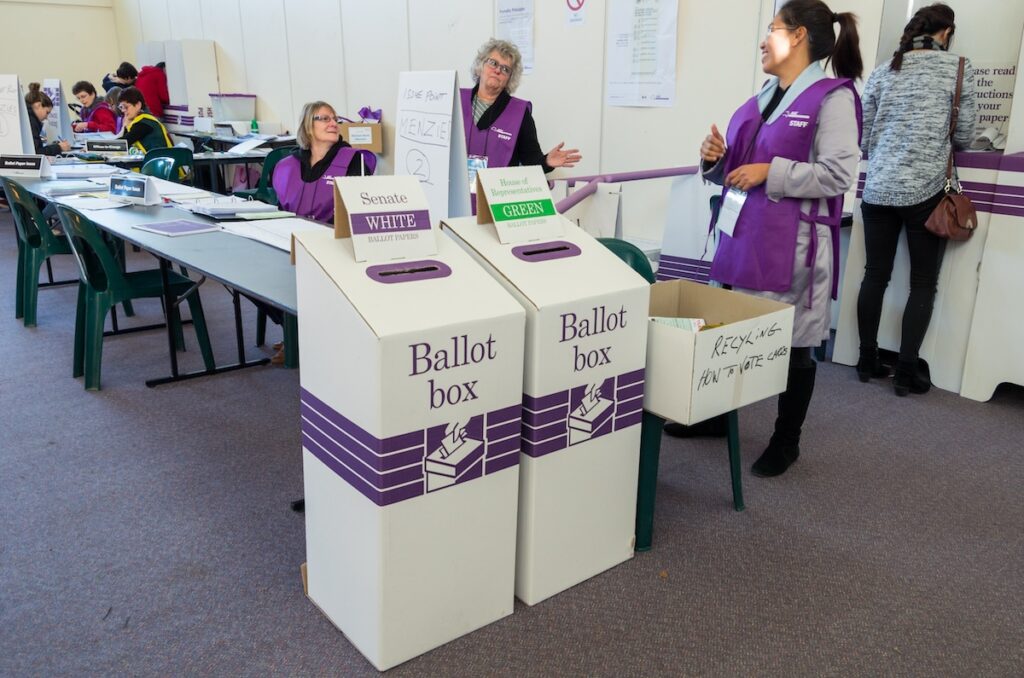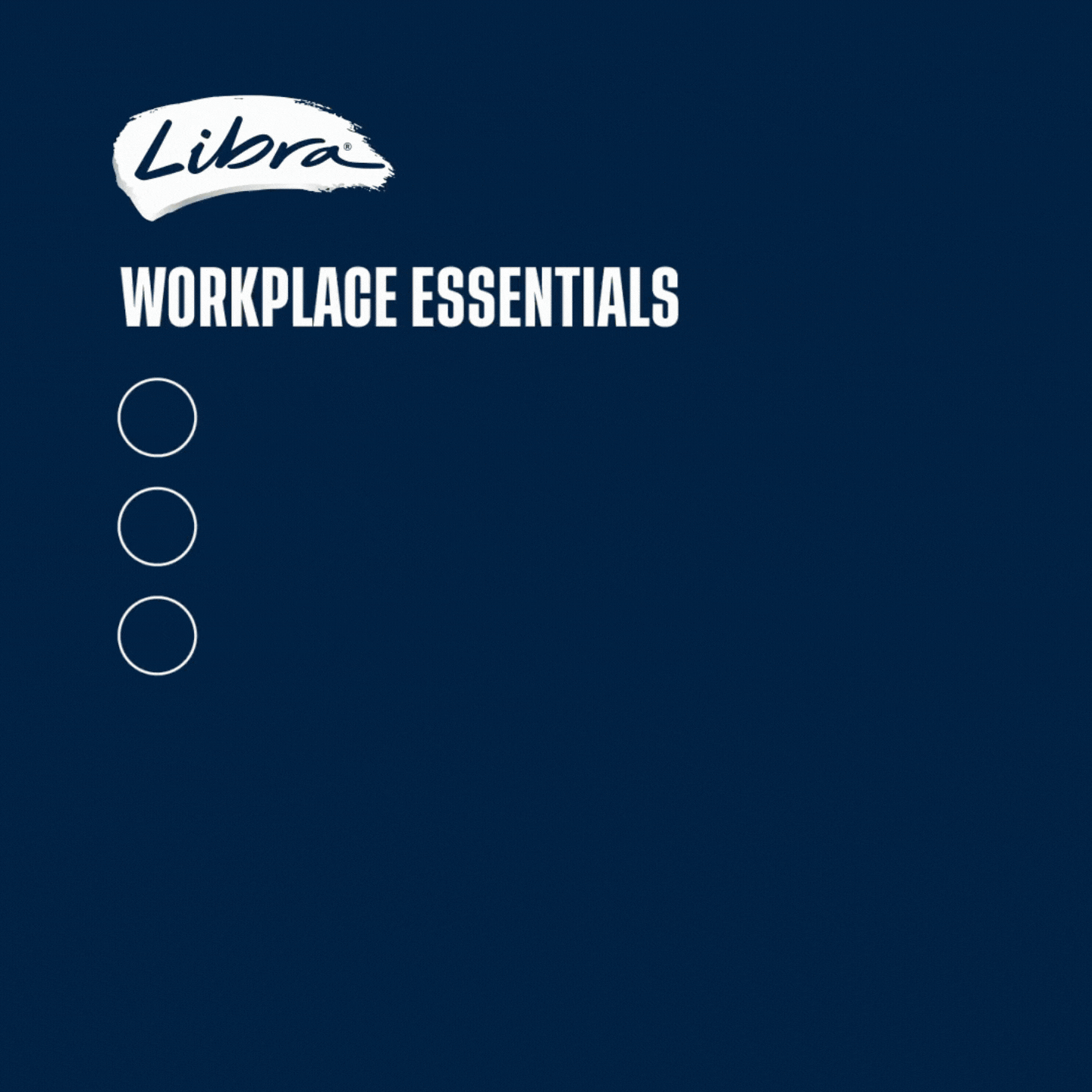Let’s be clear: everything we care about—our health, housing, childcare, climate, safety, women’s rights—are shaped by political decisions.
And while we often blame politicians (fair!), and the media (also fair!), the largest influence over our future is in the collective power of how we vote.
In Australia, voting is compulsory—something we share with only around 15 countries globally.
With early voting already underway and election day on May 3, now is the time to make the most of your compulsory vote in the best way possible to address the issues that matter to you.
Here’s your quick guide to doing just that:
First, some background on how it all works.
- Australia is divided into 150 electorates. In each electorate, we vote to send a local MP to represent us in the House of Representatives in Canberra.
- The party (or coalition) that wins 76 seats in the House of Representatives (or lower house) forms the Government either in majority or minority. Their leader becomes Prime Minister.
- We also vote for Senators to sit in the Senate or upper house.
- There are 76 members of the Senate or upper house. Each State has 12 Senators with the ACT and NT having 2 Senators. We elect Senators to represent the State or Territory we vote in.
- Australia is one of approximately 15 countries in the world where people over 18 are required to register and vote. This is called compulsory voting.
- Federal elections are held every 3 years.
Find out your federal electorate and see your candidates on the AEC website here.
How do the House of Representatives and the Senate work together?
- The House of Representatives (or lower house) proposes and votes on bills or legislation..
- The Senate (or upper house) reviews and then votes on the bills or legislation.
- When a bill or legislation is passed by both a lower and upper majority vote – then that bill or legislation becomes law of the land.
- For the vast majority of legislation major party representatives (MPs) vote as a block no matter the unique views and interests of their electorates.
- This is how every law directly impacting your life—from wages to rental laws to climate policy—is created.
See how your local MP or representative votes here (you might be surprised that your views and interests are not being represented)
Some Further Things to Know
- Unlike commercial businesses, political parties don’t have to tell the truth in their advertising and promotion (yes, seriously).
- Political parties are also exempt from spam and privacy laws.
- You can vote early or by mail. (Just be mindful who you give your postal vote form to—some parties use them to collect your data.)
Voting for Your Local MP – House of Representatives or lower house (Green ballot)
- On the small green lower house ballot, you’ll see a list of all candidates running in your electorate —major party, minor party, and/or independent.
- You’ll need to number every box on the ballot in order of your preferences. This is important for a valid vote.
- #1 = the person you most want as your local MP to represent you in Canberra, then work down to the one you least want to represent you.
Find your lower house candidates here – and see their policies here. You can also visit each candidate’s website to see their policies and plans.
Voting for the Senate – Upper House (White ballot aka the giant “tablecloth”).
- The Senate ballot lists parties above the line, and individual candidates running for those parties below the line.
- You can vote above the line (most people do) by numbering at least 6 parties in order of your preference.
- Or for real control of who you want to elect into the Senate, vote below the line by numbering at least 12 individual candidates.
The Senate reviews and can block legislation. Voting thoughtfully here gives you real influence over what laws pass or fail.
See your upper house candidates here – and see their policies here. You can also visit each of your candidate’s websites to see their policies and plans.
Real-Life Voting: Michelle’s Story
Michelle lives in regional Australia. She cares about climate, housing, and childcare and has spent some time doing her research on the candidates which will be represent her views and interests.
On or before May 3 election day, she:
- Finds her nearest polling booth via the AEC here.
- Walks past multiple corflutes and signage and volunteers handing out how-to-vote guides. Michelle ignores them – it’s entirely her choice on how she votes.
- Checks in with Australian Electoral Commission (AEC) staff, her name is marked off the electoral roll as voted – and is given her House of Representatives (green) ballot and Senate (white) ballot.
- Votes for the candidates she most wants to represent her views and interests in Canberra, ensuring she completes both ballots correctly (see our guide above).
- Drops her completed ballots in the box, grabs a democracy sausage, and is out in under 30 minutes.
That’s it. She’s just had maximum impact on the issues she cares about—housing, climate, and childcare—all in her lunch break.
Some resources to use to work out your vote:
- Build a Ballot – Get election day ready
- ABC’s Vote Compass – is a tool developed by political scientists to help you explore how your views compare to parties and candidates.
- TrueNorth – sign up for all the independent news to have on your radar to help you make an informed vote
- They Vote for You – see how your local representative votes on the issues that matter to you
- The Conversation’s 2025 Election Campaign Policy Tracker
- The Guardian’s interactive guide to electorates in the 2025 Australian election
And finally…
The loudest voices in politics aren’t always the most informed.
But when informed people vote with intention, everything changes.
Your vote is powerful – and particularly with an increasingly volatile global environment and the major issues we face – now is the time to use it.
See other articles in this Women’s Agenda series here:
- Despite the narrative that we can’t do without it, the gas industry contributes very little to Australia’s economy. Here’s why
- How we can be better allies to the trans community ahead of the election
- We lose more on gambling than Australia spends on aged care: A look at gambling harm and what we can do about it
- What do recent electoral reforms mean for our democracy? Kiera Peacock explains
- ‘Biases are supercharged’: Tracey Spicer on what women should know about AI
- How the death of Julie-Ann Finney’s son prompted her advocacy for better veteran mental health support
- Why becoming more politically active is the best new year’s resolution you can make
- We’ve just experienced Australia’s hottest spring on record. Here’s what that means for all of us
- What is the most powerful thing we can do to support asylum seekers and refugees? Jana Favero explains
- Why is abortion suddenly back in the headlines? Here’s what you need to know


